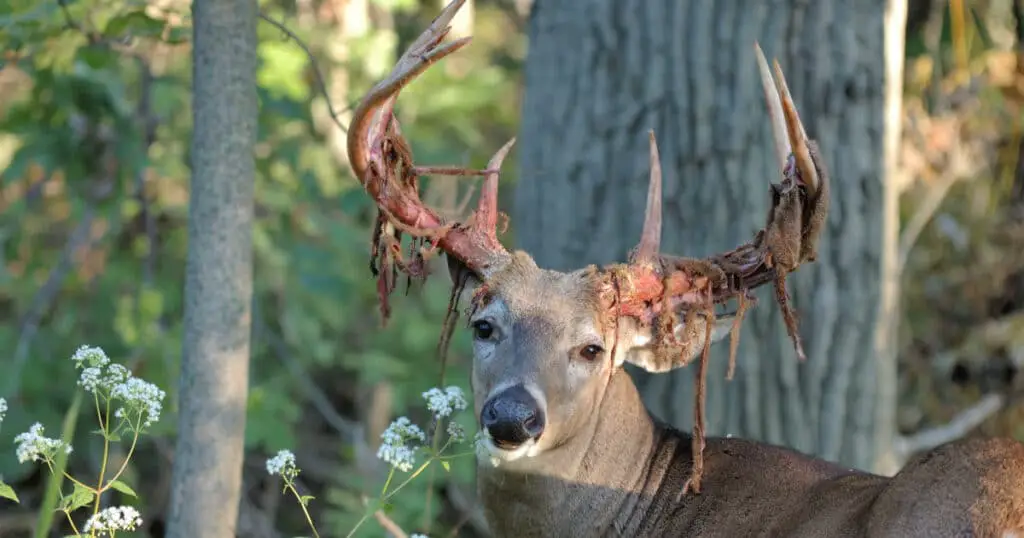When it comes to deer antlers, the rut gets all the headlines. After all, this is the time when males literally bump heads to decide who gets the female. However, while males enter the rut with their antlers as hard as possible, there is a process that allows that to happen. Deer velvet shedding is key to this process but is not as widely discussed.
What is Deer Velvet?
Velvet is the soft fuzzy layer that covers male deer antlers for a small window of time each year. While it is beautiful, the purpose of velvet is much more functional than it looks.
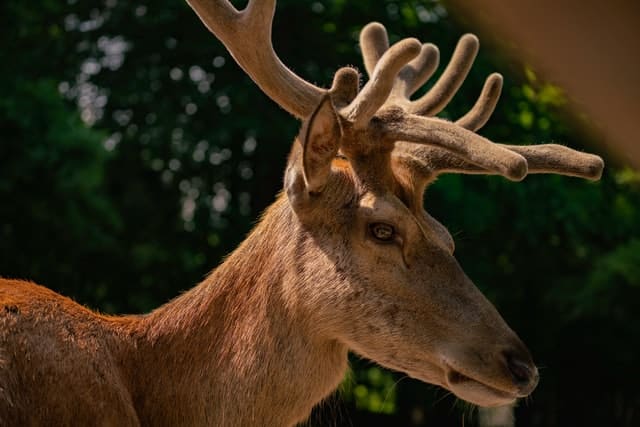
Many people assume velvet acts as some sort of weatherproofing for cold times of the year, but this is a misconception.
This concentrated network of blood vessels and nerves is actually a protective layer for the hardening antlers underneath. It allows the antlers to reach their full potential so that they can be used by the male during rutting season.
During a five-month period, the velvet provides nourishment and protection to the hardening antlers beneath, helping them grow big and strong.
In fact, velvet is one of the biggest contributing factors to deer antlers being the fastest growing tissue of any mammal.
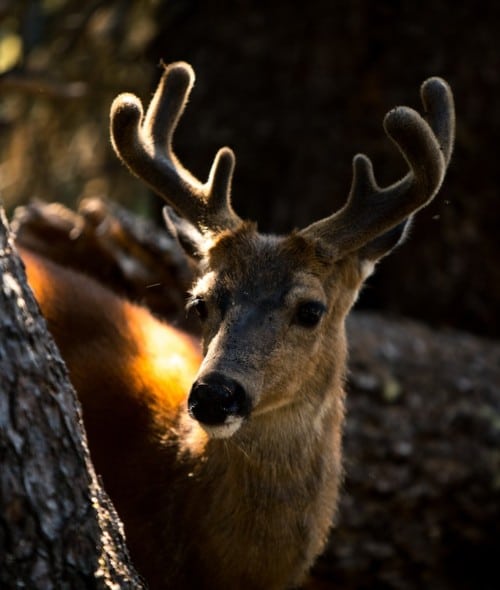
Antlers can go through as much growth in a week as human hair would in half a year.
What is Deer Velvet Shedding?
Yes, the velvet is soft and visually appealing, but at some point, the deer needs to shed the material to reveal its new antlers.
This shedding process is amongst the goriest sights in nature as the dense blood vessels burst and the velvet falls in red rags from the deer’s rack of antlers.
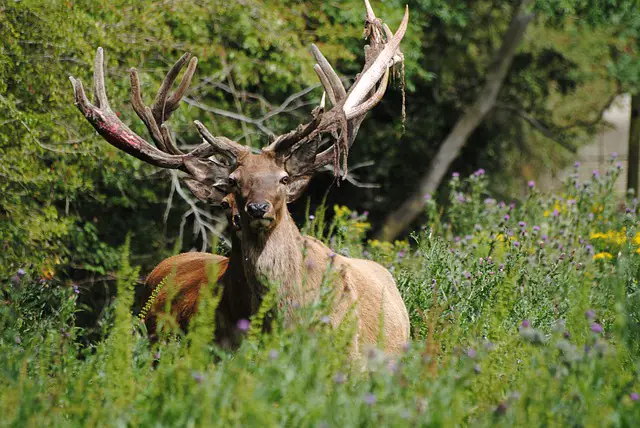
Velvet is also a commodity, and for centuries people have taken the fallen velvet and used it for medicinal and other purposes.
Antler Growth
Deer have no control over the growth of their antlers, instead relying on a synchronization with nature.
Let There Be Light
Specifically, growth centers around the changing light across seasons. For example, during the spring there is more daylight, which triggers an increase in testosterone. This surge of hormones results in growth of the male’s neck muscles and antlers.
Hungry Stags
Bucks must feed a lot leading up to and through spring and summer to receive the nutrition necessary to grow antlers. How much food a deer eats can directly contribute to the size of their antlers.
Age is More Than a Number
Age is another factor. It is common to see males described as a “4-point” buck or something similar. The number of points refers to how many spikes there are on an antler.
Older and stronger bucks will usually have the most points, and those male deer are prized by hunters and taxidermists alike.
Peeling off the Velvet
Despite the rut being months away, male deer start to prepare to face off against rivals for the affections of females early.
The velvet keep the antlers safe during this time to ensure that they can reach their full potential. When velvet shedding happens, it is the signal that the rut is beginning.
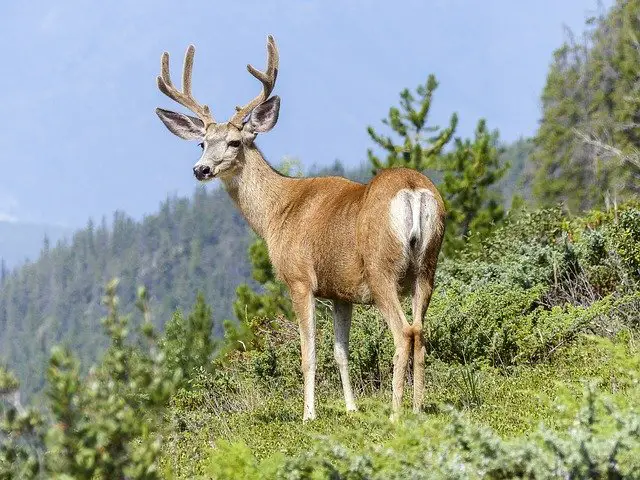
During the final stages before shedding, the buck will already be displaying behaviors used in the rut.
Over the weeks heading to the rut, antler velvet will peel off, usually around mid-August. It is during the peak of summer when the tissue in the antlers mineralizes and hardens as the blood flow is cut off.
For deer shedding velvet and peeling it off is a tricky task that results in strips of bloody material hanging from the new antlers.
Some bucks get the job done quickly and a full shed can take just a few hours. For some males, it is a task that can last for days. Over the shedding period, the deer will try to remove the blood-filled velvet by rubbing against trees and even biting off hanging pieces if they can reach them.
Reaching Maturity
The period when bucks have velvet on their antlers is an interesting time. They seem to be living in harmony with one another.
It is a stark contrast to the all-out war of the rut.
During the summer when antlers are still in velvet, a dominance hierarchy exists, even if there doesn’t seem to be one. Bucks will instead use posture, bumping, and pawing to assert themselves. These methods avoid putting the sensitive velvet at risk.
Around Labor Day each year, the velvet shedding season begins in earnest, and lasts until approximately late September. Once the velvet is shed, all bets are off.
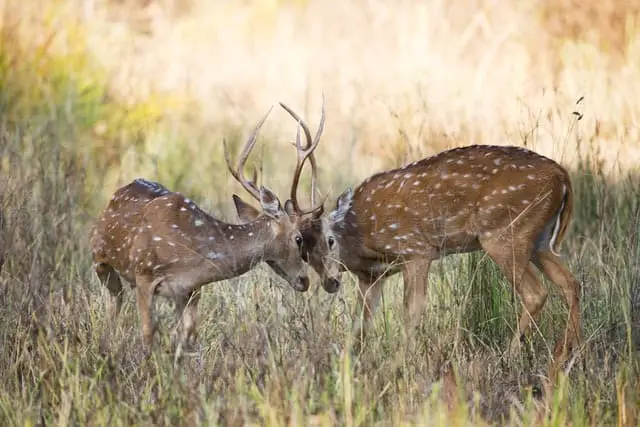
The Bachelor Group
As noted, bucks will pal up with other males during the velvet stage of antler growth through the summer. These gangs of males will forage for food together, sleep close to each other, and generally just be buddies.
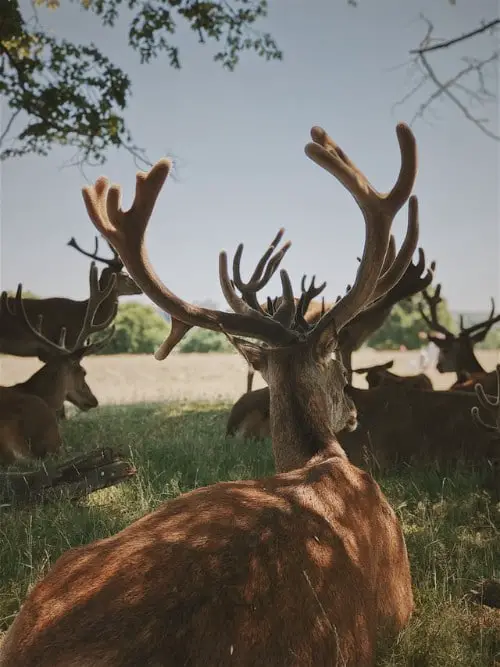
Bachelor groups of deer can reach over 10 bucks and very few dominance displays are evident.
We know the rut happens shortly after velvet shedding, but bucks react differently to the transformation. For example:
- Some males will remain friendly with others who were in their bachelor group.
- Some will outright avoid any fighting, especially if they are weak.
- Others will move away from their groups, especially older animals.
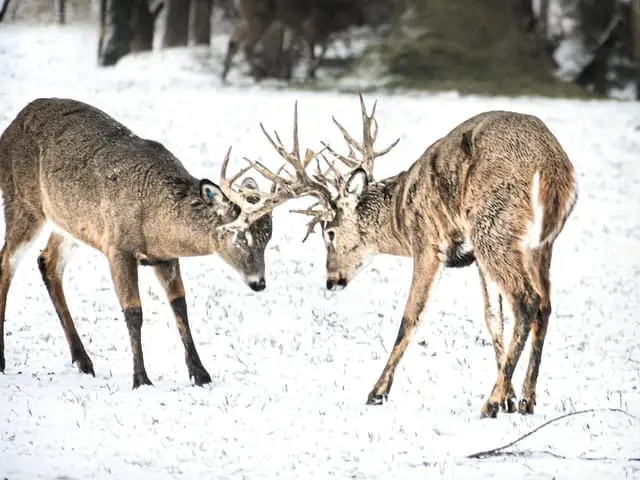
Of course, some will engage in all-out war and fight with each other. They will also be more visible and engage in pre-mating behaviors.
With the velvet shed, the full-strength antlers are now on display and are used during the rut. Eventually, deer shed the antlers themselves, and start the process anew.
The Science Behind Deer Velvet Shedding
While the image of deer shedding their velvet might seem like just another quirk of nature, the science behind it is fascinating and complex.
This process is orchestrated by a finely-tuned symphony of hormonal changes, primarily driven by fluctuations in testosterone levels linked to daylight duration, known as the photoperiod.
As days lengthen in spring and summer, rising testosterone levels kick-start antler growth.
The velvet, rich in blood vessels and nerves, is nature’s ingenious way of supplying nutrients and oxygen to the rapidly growing antlers, making them one of the fastest-growing tissues in any mammal.
This growth phase is not just a random burst; it’s a carefully timed biological event. As daylight starts to wane towards the end of summer, another hormonal shift cues the deer: it’s time to shed the velvet.
This shift sees a reduction in the blood supply to the velvet, causing it to dry up and become an itchy encumbrance for the deer, prompting them to rub it off against trees and bushes.
It’s a natural, albeit dramatic, way for the deer to prepare their antlers for the rigors of the upcoming rut.
Velvet Shedding: A Deer’s Story vs. Other Horned and Antlered Brethren
While deer are perhaps the most well-known for their velvet shedding, they aren’t the only ones in the animal kingdom to go through a similar process. Let’s take a brief safari to see how their cousins manage their headgear.
- Elk and Moose: Like their deer relatives, elk and moose also grow and shed velvet each year. However, their antlers can be significantly larger, meaning they need a more substantial amount of nutrients during growth. Their velvet shedding process is similar to deer, but given the size of their antlers, it can be a more visually striking event.
- Reindeer (Caribou): Unique in the deer family, both male and female reindeer grow antlers. Their velvet shedding process is akin to that of other deer species, but with a twist: females can retain their antlers until after they give birth, using them as a resource in the harsh Arctic environment.
- Animals with Permanent Horns (Goats, Sheep): Here’s where the story changes. Animals like goats and sheep don’t shed their horns, which are permanent structures made of keratin, the same material as our fingernails. Unlike the deer family, their horns don’t regrow annually and don’t have a velvet phase. Instead, their horns grow continuously throughout their lives.
This comparison reveals a captivating aspect of nature: while different species may have evolved varying methods to deal with their headgear, the underlying principle remains – adapting these remarkable structures for survival and reproduction.
Whether it’s the dramatic shedding of velvet in deer or the continuous growth of horns in goats, these processes showcase nature’s incredible ability to innovate for survival.

